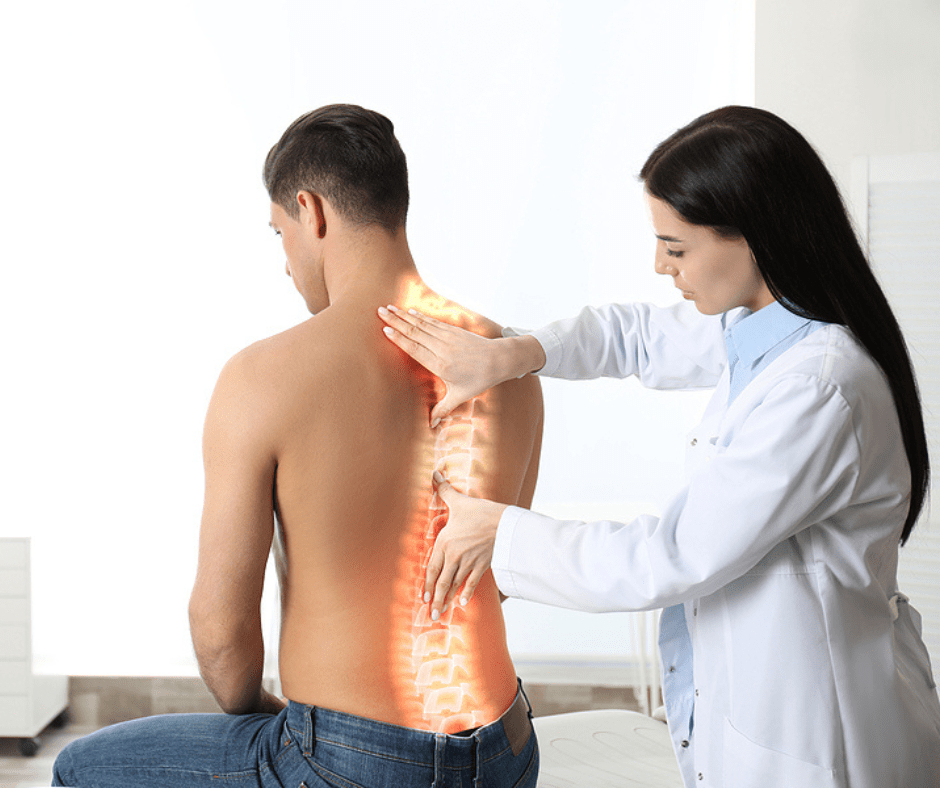Spinal Cord Injury (SCI) is a life-altering event that can have profound and lasting effects on an individual’s life. Whether caused by a traumatic incident or a non-traumatic condition, the consequences of SCI extend beyond the physical realm, affecting various aspects of daily living. In this blog, we will explore the intricacies of SCI, its impact on the central nervous system, and delve into the significance of rehabilitation, physical therapy, and innovative technologies such as hydrotherapy and EMS machines in the journey towards recovery.

The spinal cord, a vital component of the central nervous system, plays a crucial role in transmitting signals between the brain and the rest of the body. When a traumatic event, such as an accident, or a non-traumatic condition damages the spinal cord, it can result in paralysis, a broad term encompassing quadriplegia, paraplegia, and various degrees of motor and sensory impairments.
The Impact on Motor and Sensory Functions:
Spinal Cord Injury often leads to a disruption in both motor and sensory functions. Quadriplegia affects all four limbs, while paraplegia involves the lower limbs. Understanding the extent of spinal cord damage, whether complete or incomplete, is crucial in determining the prognosis and tailoring an effective rehabilitation plan.
Assistive Devices and Adaptive Technology
The use of assistive devices such as wheelchairs and mobility aids are common among individuals with SCI. Technological advancements in adaptive equipment enhance accessibility and contribute to increased independence, allowing individuals to navigate daily activities more efficiently.
Managing Complications: Spasticity, Autonomic Dysreflexia, and More
SCI can lead to various complications, including spasticity, autonomic dysreflexia, and bladder and bowel dysfunction. Addressing these issues requires a multidisciplinary approach, incorporating medical interventions, rehabilitation, and assistive technologies.

Immersing in the Benefits of Hydrotherapy in Spinal Cord Injury
Hydrotherapy, also known as aquatic therapy, has emerged as a valuable and therapeutic approach in the rehabilitation of individuals with Spinal Cord Injury (SCI). The unique properties of water create a supportive environment that offers a range of physical and psychological benefits, contributing significantly to the recovery journey of those affected by SCI.
- Water buoyancy supports the body, reducing the impact of gravity and providing a near-weightless environment. This lessens the strain on joints and the spine, making it easier for individuals with SCI to move and exercise.
- The warm water in hydrotherapy helps to relax muscles and increase joint flexibility. Individuals with SCI can experience expanded range of motion, facilitating improved mobility and reducing stiffness.
- Hydrotherapy allows for cardiovascular exercise in a low-impact setting. Water resistance provides gentle resistance for muscle strengthening, promoting cardiovascular health without excessive stress on the body.

- Hydrotherapy promotes better blood circulation and increased blood flow to affected areas. This can aid in the healing process and reduce the risk of complications such as pressure sores.
- Water resistance serves as a natural form of resistance training. Hydrotherapy exercises help in building muscle strength and endurance, supporting overall physical conditioning.
- Pain Management: The warmth of the water in hydrotherapy has a soothing effect on muscles and joints. It can contribute to pain relief and relaxation, offering a natural way to manage discomfort associated with SCI.
- Hydrotherapy provides a stable environment for practicing balance and coordination exercises.
The Role of EMS Machines in SCI Rehabilitation
EMS (Electrical Muscle Stimulation) machines have gained prominence in SCI rehabilitation. These devices use electrical impulses to stimulate muscle contractions, aiding in muscle re-education and preventing muscle atrophy. EMS machines can be a valuable tool in maintaining and improving muscle strength, especially in individuals with limited mobility.
Regenerative Medicine and Stem Cell Therapy
Advancements in spinal cord research offer hope for the future. Regenerative medicine and stem cell therapy hold promise in repairing damaged spinal cord tissue, potentially restoring lost functions. While these treatments are still in the experimental stages, ongoing research signifies a beacon of hope for individuals living with SCI.

A team of Physiotherapists in Alexa Clinic under the guidance of Dr. Shipra Kumari, Chief Physiotherapist and certified Aquatic Therapist (IATF Switzerland).
Alexa Clinic is a super-specialty physiotherapy and aquatic therapy clinic first of its kind opened in Kolkata in the in the year 2019. With many accolades and recognition Alexa Clinic has treated more than 10,000 patients.
It’s easy to book an appointment with Dr. Shipra Kumari over a call or visit the 8777694040 website of Alexa Healthcare.
https://www.facebook.com/alexaactiveaging
https://www.youtube.com/@alexaactiveaging
